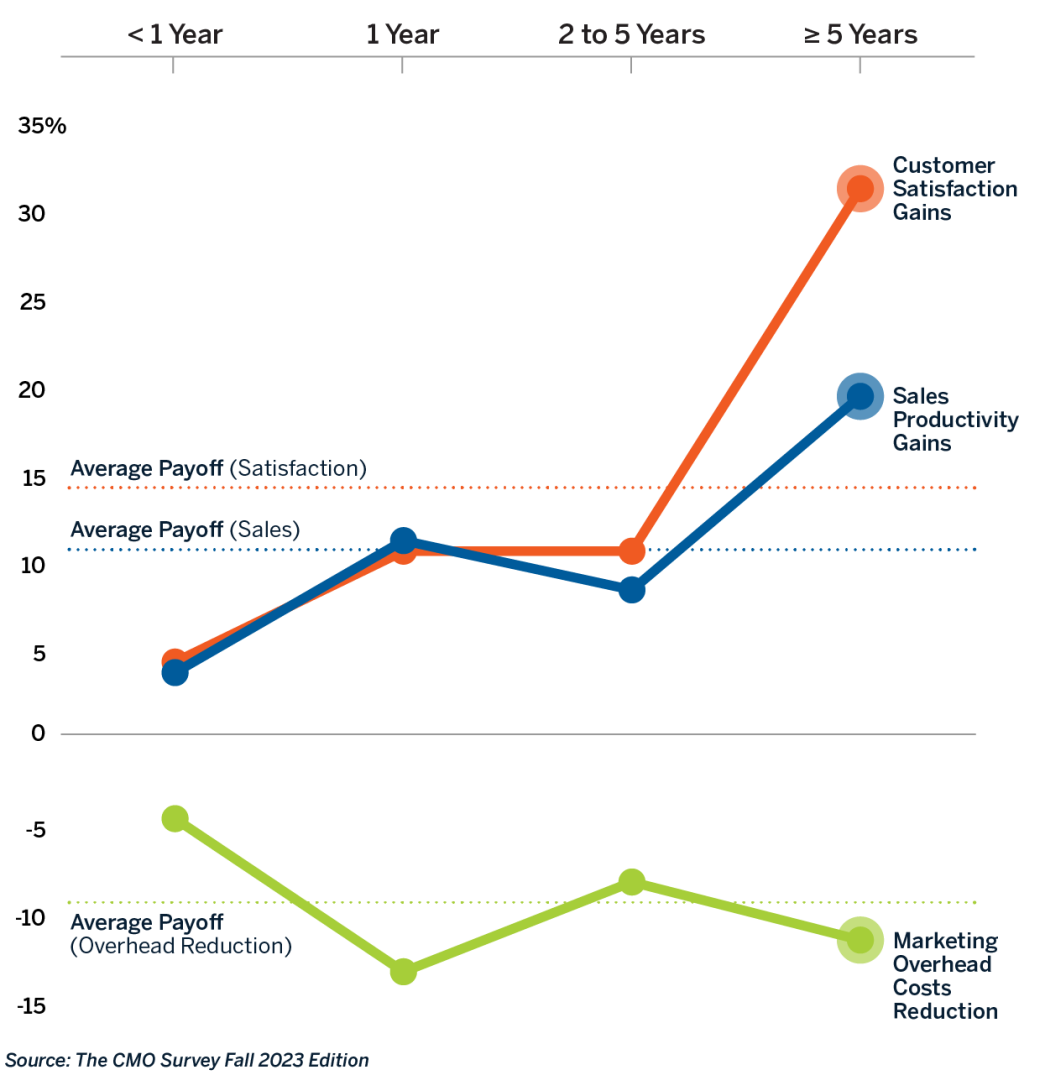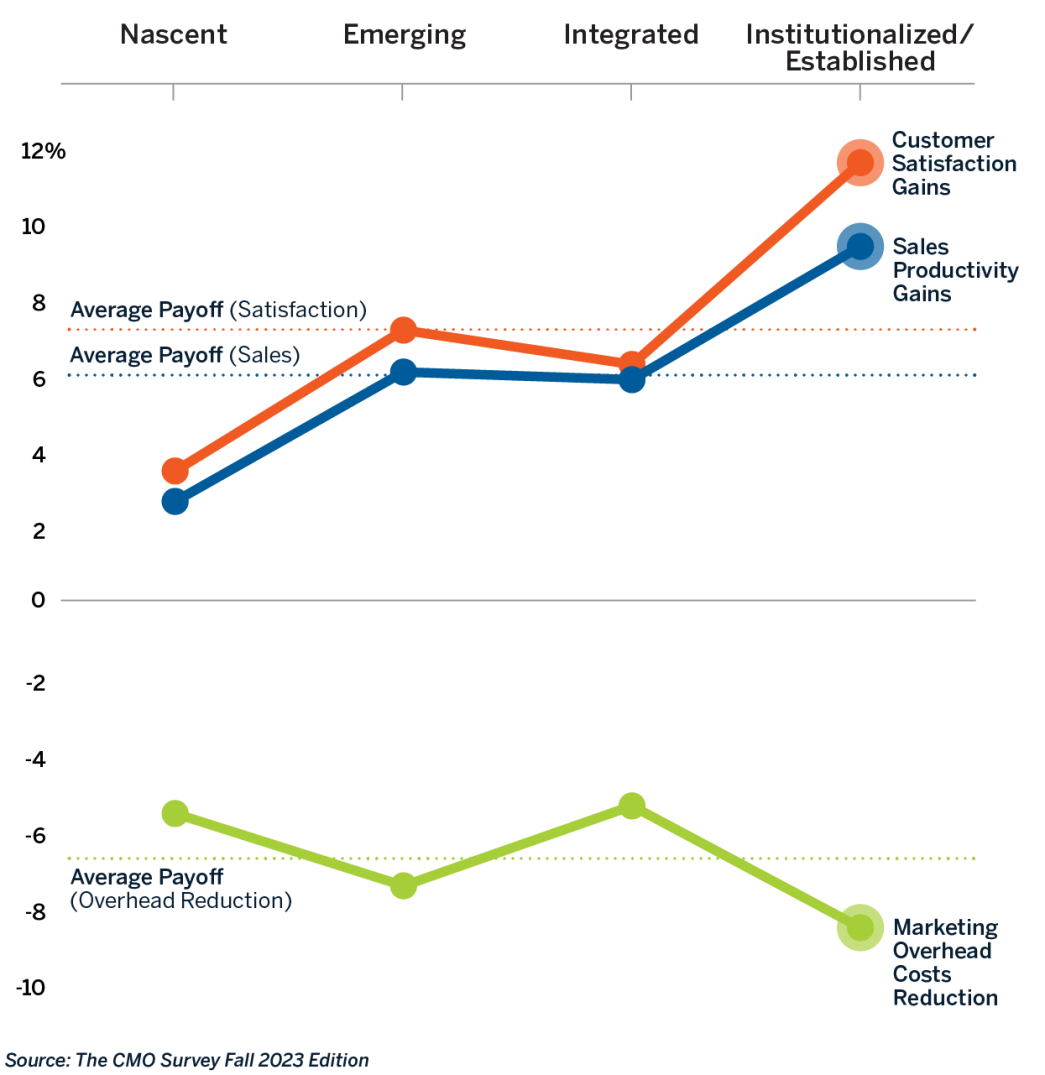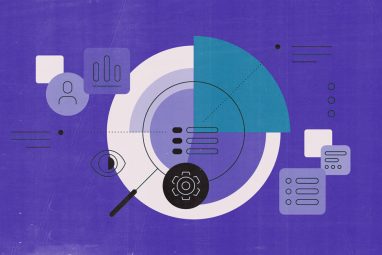When AI Investments Pay Off in Marketing
Marketing leaders are realizing gains from AI in three key areas, new research shows: increasing sales productivity, increasing customer satisfaction, and reducing marketing overhead costs.
News
- Will Halt Potential Rogue AI Systems, Says Microsoft AI Chief
- Google Bets Big on Data Infra With a $4.75B Deal in Intersect
- OpenAI Softens ChatGPT’s Tone While Scaling for an AI Showdown
- UAE President Meets Musk to Discuss AI and Cross-Border Collaboration
- UAE Forms National Media Authority to Centralize Media Oversight
- TikTok Strikes US Sale Deal With Oracle, Silver Lake, and UAE’s MGX

Patrick George / Ikon Images
From content creation to software coding and customer segmentation, artificial intelligence deployment fever is real. But amid a great deal of media, analyst, and executive speculation about how AI will impact enterprises, it’s still not easy to see where organizations are reaping the results. To get new insights into what is currently happening with AI deployments in marketing and the associated payoffs, The CMO Survey asked a sample of 316 marketing leaders at for-profit U.S. companies to rate how the use of AI in marketing has affected outcomes. The marketing leaders, 95.6% of whom were at the vice president level or higher, reported gains in three key areas: a 6.2% increase in sales productivity, a 7% increase in customer satisfaction, and a 7.2% decrease in marketing overhead costs.
Given these positive results, we took a deeper dive into the survey findings to understand the factors that improve or hurt AI payoffs. What we found is that the return on AI investment varies depending on AI tool adoption time, the company’s digital transformation stage, and its level of experimentation with AI. Let’s take a closer look at the data and what it shows marketers.
The AI Adoption-Payoff Curve
A striking finding from the survey is that AI does not have a long history in marketing at most organizations. The results indicate that 60.4% of companies have used AI in marketing for less than one year, 17.9% for one year, and 18.7% for two to five years, and only 2.9% have used AI in marketing for more than five years.
Why the slow start for so many organizations? Many companies have experienced challenges scaling AI in business functions due to the cost, effort, and complexity of training and deploying AI data models. However, the launch of ChatGPT in November 2022 made it much easier to try AI tools. Leaders began exploring generative AI’s potential to innovate, optimize tasks, and enable domain-specific business processes more broadly across their organizations. Gartner has predicted that more than 80% of enterprises will use generative AI APIs or will have deployed generative AI applications by 2026. That’s up from 5% in 2023.
AI’s adoption time matters when it comes to payoffs. However, increasing AI adoption and expertise does not follow an expected trajectory of amplifying returns continuously over time, according to CMO Survey data. Instead, AI payoffs accelerate when companies move from less than one year of experience to a full year of experience deploying AI models. Then, AI returns weaken from years 2 to 5 and accelerate again after five years.
What explains this? During year 1, companies typically deploy minimum viable products and demonstrate ROI on them to gain the budget necessary to scale AI projects. A typical path is to take a particular business use case and roll it out across several functions or enterprisewide. After IT and data teams secure executive sponsorship and investment for expansion, they do the hard work of setting up AI competencies, such as deploying more data models to optimize different use cases, creating machine learning operations (MLOps) capabilities, and monitoring and retraining AI models when they drift. This hard work flattens positive returns in years 2 through 5, given the time and learning involved. However, the payoff seems to be worth it with payoffs doubling by year 5.
How AI Adoption Time Influences Payoffs

The Link to Digital Transformation Stage
As companies navigate digital transformation, leaders are working hard to discern where AI fits and where it will have the highest impact. Companies execute a digital transformation journey in four phases of maturity:
- Nascent — taking early steps to design and visualize the transformation.
- Emerging — building nonintegrated digital elements.
- Integrated — fully integrating digital investments across the company.
- Institutionalized/established — leveraging digital investments to drive and evaluate marketing decisions.
Considering each phase, we again see a nonlinear payoff curve for AI investments over time. Small payoffs are realized in the nascent phase then double in the emerging phase (when sales productivity and customer satisfaction increase). These payoffs decrease when companies move toward the integrated phase, then the highest payoffs materialize during the institutional/established phase. This trajectory is similar to what you see when you examine the associated decreases in marketing overhead costs.
Integration is costly as companies work to connect disparate systems across the organization into more effective capabilities. This requires cross-functional and cross-division cooperation — two challenging feats in most organizations. The takeaway here is that marketing leaders should weather these transitional costs between the emerging and integrated phases to realize the high gains from reaching the institutionalized/established phases.
How Stages in the Digital Transformation Journey Affect Payoffs

AI Success Driven by Experiments
One driver of success in digital transformations is the use of experiments. According to The CMO Survey, 35.6% of marketers perform experiments to understand the impact of marketing actions on customers, up from 31.4% in June 2020.
While these results show a modest uptick, this percentage remains low, placing most companies in the medium-use bucket for experiments — a rate that does not correlate with the highest AI payoffs. Instead, we find that the AI payoffs associated with sales productivity, customer satisfaction, and marketing overhead costs are highest for companies that report that they conduct experiments at least 50% of the time.
The Link Between AI Payoffs and Experimentation
 Source: The CMO Survey Fall 2023 Edition
Source: The CMO Survey Fall 2023 Edition
Seek Out Strategic Uses of AI in Marketing
According to our survey data, the most common ways marketing organizations use AI are for content personalization (52.8% of companies) and content creation (49%). However, these most-used applications don’t produce the strongest returns across sales productivity, customer satisfaction, and marketing overhead cost outcomes.
The data shows that companies improve their returns more by using AI in less-common — often strategic — ways. These include improving ROI by optimizing marketing content and timing (used by only 36.6% of companies), leveraging predictive analytics for customer insights (32.9%), targeting decisions (31.7%), using conversational AI for customer service (26.4%), deploying conversational AI for customer service (26.4%), enhancing data analysis and reporting (24.8%), deepening customer segmentation (21.5%), delivering next-best offers (4.9%), and optimizing voice search (3.7%). The lesson here is that marketers should think beyond the more common AI applications and identify strategic uses of AI to drive significant impact across their organizations.
AI is a challenging technology that disrupts existing systems. This high change quotient means that payoffs may be uncertain as marketing leaders embrace new ways of organizing and making decisions. The CMO Survey’s results show that companies that successfully leverage AI experience see an increase in sales productivity and customer satisfaction and a decrease in marketing overhead costs. While these gains might not be realized upon initial adoption, the growth potential of these payoffs soars with time, digital transformation, experimentation, and strategic and differentiated use of AI tools.








